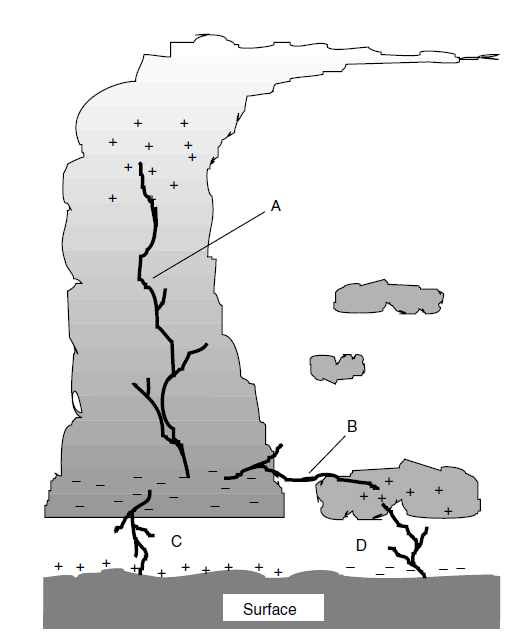
تاريخ الفيزياء

علماء الفيزياء


الفيزياء الكلاسيكية

الميكانيك

الديناميكا الحرارية


الكهربائية والمغناطيسية

الكهربائية

المغناطيسية

الكهرومغناطيسية


علم البصريات

تاريخ علم البصريات

الضوء

مواضيع عامة في علم البصريات

الصوت


الفيزياء الحديثة


النظرية النسبية

النظرية النسبية الخاصة

النظرية النسبية العامة

مواضيع عامة في النظرية النسبية

ميكانيكا الكم

الفيزياء الذرية

الفيزياء الجزيئية


الفيزياء النووية

مواضيع عامة في الفيزياء النووية

النشاط الاشعاعي


فيزياء الحالة الصلبة

الموصلات

أشباه الموصلات

العوازل

مواضيع عامة في الفيزياء الصلبة

فيزياء الجوامد


الليزر

أنواع الليزر

بعض تطبيقات الليزر

مواضيع عامة في الليزر


علم الفلك

تاريخ وعلماء علم الفلك

الثقوب السوداء


المجموعة الشمسية

الشمس

كوكب عطارد

كوكب الزهرة

كوكب الأرض

كوكب المريخ

كوكب المشتري

كوكب زحل

كوكب أورانوس

كوكب نبتون

كوكب بلوتو

القمر

كواكب ومواضيع اخرى

مواضيع عامة في علم الفلك

النجوم

البلازما

الألكترونيات

خواص المادة


الطاقة البديلة

الطاقة الشمسية

مواضيع عامة في الطاقة البديلة

المد والجزر

فيزياء الجسيمات


الفيزياء والعلوم الأخرى

الفيزياء الكيميائية

الفيزياء الرياضية

الفيزياء الحيوية

الفيزياء العامة


مواضيع عامة في الفيزياء

تجارب فيزيائية

مصطلحات وتعاريف فيزيائية

وحدات القياس الفيزيائية

طرائف الفيزياء

مواضيع اخرى
STATIC ELECTRICITY
المؤلف:
S. Gibilisco
المصدر:
Physics Demystified
الجزء والصفحة:
300
29-9-2020
1963
STATIC ELECTRICITY
Charge carriers, particularly electrons, can build up or become deficient on objects without flowing anywhere. You’ve experienced this when walking on a carpeted floor during the winter or in a place where the humidity is low. An excess or shortage of electrons is created on and in your body. You acquire a charge of static electricity. It’s called static because it doesn’t go anywhere. You don’t feel this until you touch some metallic object that is connected to an electrical ground or to some large fixture, but then there is a discharge, accompanied by a spark and a small electric shock. It is the current, during this discharge, that causes the sensation.
If you were to become much more charged, your hair would stand on end because every hair would repel every other one. Objects that carry the same electric charge, caused by either an excess or a deficiency of electrons, repel each other. If you were massively charged, the spark might jump several centimeters. Such a charge is dangerous. Static electric (also called electrostatic) charge buildup of this magnitude does not happen with ordinary carpet and shoes, fortunately. However, a device called a Van de Graaff generator, found in some high-school physics labs, can cause a spark this large. You have to be careful when using this device for physics experiments.
On the grand scale of the Earth’s atmosphere, lightning occurs between clouds and between clouds and the surface. This spark is a greatly magnified version of the little spark you get after shuffling around on a carpet.
Until the spark occurs, there is an electrostatic charge in the clouds, between different clouds, or between parts of a cloud and the ground. In Fig. 1, four types of lightning are shown. The discharge can occur within a single cloud (intracloud lightning, part a), between two different clouds (intercloud lightning, part b), or from a cloud to the surface (cloudto- ground lightning, part c), or from the surface to a cloud (ground-to-cloud lightning, part d). The direction of the current flow in these cases is considered to be the same as the direction in which the electrons move. In cloud-to-ground or ground-to-cloud lightning, the charge on the Earth’s surface follows along beneath the thunderstorm cloud like a shadow as the storm is blown along by the prevailing winds.
The current in a lightning stroke can approach 1 million A. However, it takes place only for a fraction of a second. Still, many coulombs of charge are displaced in a single bolt of lightning.

Fig. 1. (a) Lightning can occur within a single cloud (intracloud), (b) between clouds (intercloud), or between a cloud and the surface (c) cloud to ground or (d) ground to cloud.